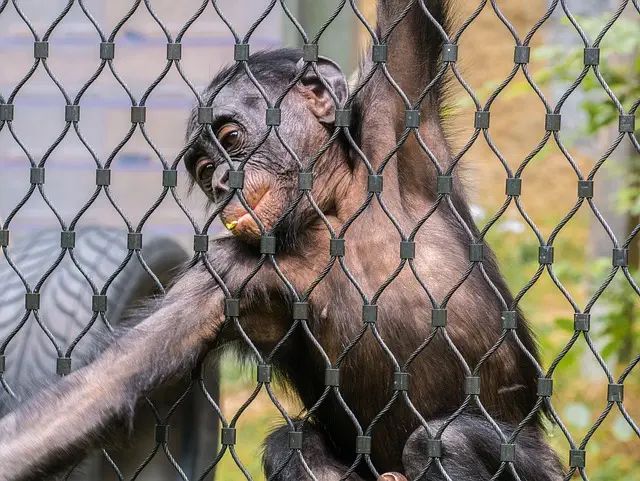Kenji Kratom is a premium strain of Mitragyna Speciosa originating from Malaysia's rich and humid landscapes. It is celebrated for its distinctive alkaloid composition that includes high levels of 7-hydroxymitragynine, mitraphylline, and speciogynine, which contribute to its unique dual-action effects, offering both stimulating and sedative experiences based on dosage. The strain is known for its variegated vein colors—red, green, and variations thereof—each providing a distinct experience. Kenji Kratom is cultivated with care to maintain its natural potency and is harvested at the peak of its alkaloid content, typically after a 3 to 5-month growth period. Farmers employ both traditional and modern horticultural methods tailored to Malaysia's climate and soil, ensuring the integrity and efficacy of the buds through gentle handpicking and a precise drying process. This results in high-quality Kenji Kratom that offers users a balanced effect spectrum, from mood elevation and focus enhancement at lower doses to relaxation and pain relief at higher doses. Its consistent alkaloid content sets it apart as a preferred choice for those seeking a reliable kratom experience, making it a sought-after strain within the botanical community, with users cautioned to approach it thoughtfully, considering individual responses and well-being.
Discover the unique qualities of Kenji Kratom, a distinguished strain originating from the rich soils of Malaysia. This article delves into the intricacies of Kenji Kratom, shedding light on its composition, effects, and the meticulous cultivation practices that yield this sought-after botanical. Join us as we explore the world of Malaysian Kratom Buds, highlighting the nuanced characteristics that set Kenji apart from other strains in the Kratom realm.
- Exploring Kenji Kratom: A Deep Dive into Malaysian Kratom Buds
- The Composition and Effects of Kenji Kratom: Understanding the Strain's Characteristics
- Cultivation and Harvesting of Kenji Kratom: Insights into the Growing Process in Malaysia
Exploring Kenji Kratom: A Deep Dive into Malaysian Kratom Buds

Kenji Kratom, a strain originating from the rich and diverse landscapes of Malaysia, has garnered attention in various botanical communities for its unique properties and potency. These Kratom buds are carefully cultivated, with an emphasis on preserving their natural alkaloid content, which is known to offer a range of effects. The Malaysian climate, characterized by its humid conditions and fertile soil, provides an ideal environment for the nurturing of these specific Mitragyna Speciosa plants. Kenji Kratom is distinguished by its distinct vein coloration, which can vary from red to green, each offering a different experience upon consumption. Connoisseurs often seek out this strain due to its nuanced effects, which can include heightened energy levels, enhanced mood, and a state of relaxation, depending on the dosage and individual physiology. The cultivation process is meticulous, ensuring that each bud reaches its full potential in terms of alkaloid concentration, which is crucial for maintaining consistency in the user experience. For those intrigued by the world of Kratom, Kenji Kratom represents a premium option to explore, with its balanced effects being both stimulating and soothing. It’s important to approach these botanicals with caution, as individual responses may vary, and one should always prioritize personal well-being when experimenting with any new substance.
The Composition and Effects of Kenji Kratom: Understanding the Strain's Characteristics

Kenji Kratom, a strain derived from the mitragyna speciosa tree, is renowned for its distinct composition and effects that set it apart from other kratom varieties. The leaves of Kenji Kratom contain a unique alkaloid profile, with significant amounts of 7-hydroxymitragynine, which is believed to contribute to its potency. This alkaloid, along with mitraphylline and speciogynine, are the key compounds responsible for the strain’s effects. Users often report a balance of stimulating and sedating properties, making Kenji Kratom a versatile choice depending on the dosage and the user’s sensitivity. At lower doses, it can invigorate and sharpen focus, while higher doses tend to induce relaxation and pain relief. The strain’s characteristics make it a popular choice for individuals seeking a balanced experience without the overpowering sedative effects often associated with some kratom varieties.
Understanding Kenji Kratom requires a closer examination of its subtle nuances. Unlike other strains that are categorized primarily by the color of their leaves, which can sometimes be misleading regarding their effects, Kenji Kratom’s effects are more consistently predictable due to its stable alkaloid content. This consistency in composition is what users appreciate about this strain, as it allows for a more reliable and predictable experience. Whether seeking a gentle lift in mood and energy or seeking to unwind after a long day, Kenji Kratom’s balanced effects can be tailored to the user’s needs, which is why it has garnered attention in kratom enthusiast communities.
Cultivation and Harvesting of Kenji Kratom: Insights into the Growing Process in Malaysia

Kenji Kratom, a variant of Mitragyna speciosa native to Southeast Asia and widely cultivated in Malaysia, is renowned for its unique alkaloid profile and potent effects. The cultivation of Kenji Kratom in Malaysia involves meticulous attention to the soil quality, climate conditions, and spacing between plants, which are critical factors influencing the quality and potency of the harvested kratom buds. Farmers employ traditional agricultural methods alongside modern horticultural practices to optimize the growth and resilience of these kratom plants. The region’s humid climate and fertile soil provide an ideal environment for Kenji Kratom, allowing it to thrive.
The harvesting process of Kenji Kratom is carried out with precision, typically when the leaves reach optimal maturity, which is around 3 to 5 months after planting. This timing is crucial as it ensures that the alkaloid content, particularly the distinctive alkaloids found in Kenji strains, are at their peak concentrations. The mature leaves are carefully hand-picked to prevent damage to the tree, a practice that aligns with sustainable farming methods and preserves the integrity of the kratom buds. After harvesting, the leaves undergo a drying process that is critical for preserving the alkaloids and preventing contamination. This meticulous approach to cultivation and harvesting contributes to the high-quality Kenji Kratom buds that are sought after by consumers around the globe.
Kenji Kratom, a distinctive strain hailing from the lush landscapes of Malaysia, has emerged as a subject of considerable interest due to its unique composition and discernible effects. This article has delved into the intricacies of Kenji Kratom, elucidating its cultivation process, the characteristics that set it apart, and the potential impact of these factors on its potency. For those intrigued by the complexities of kratom strains, particularly Kenji, understanding its origin and growth conditions is key to appreciating its full scope. As interest in alternative wellness solutions continues to grow, Kenji Kratom’s role in this domain is poised to expand, offering a natural option for those seeking it.






